Initial Ideas and Inspiration
For my final project, I wanted to create a custom deck box for Magic The Gathering cards and was inspired by this flower night light. My initial idea was to create a deck box that opens like a flower. I decided on a natural aesthetic mirroring the real forms of a flower as closely as possible. This decision is intended to accent the deck contained within the box which is built around a card decorated with a serene field of lotuses. Below are some of my initial ideation sketches which helped me to understand how the form of a flower could be integrated around the negative space required for holding a deck. What these sketches revealed to me is that the box would have to be bigger than initially expected to maintain its flower-like form and that an automated method of actuation was probably not feasible without compromising the form of the box.
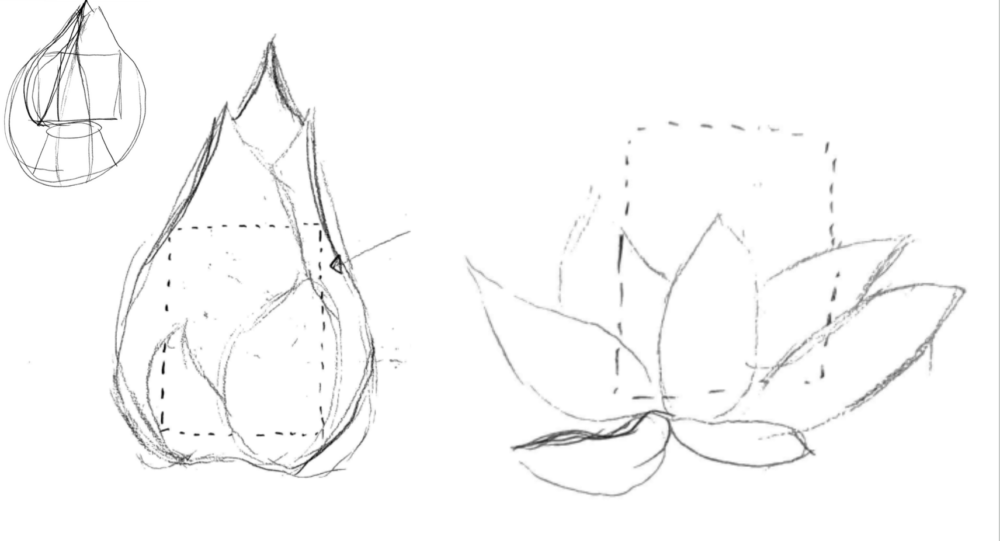
Figure 1: Initial Ideation Sketches
Constraints and Objectives
The most critical constraint for this project is that the final box must be able to adequately fixture and protect the cards contained within it. Initially, I thought the next most important constraint would be that it maintained the approximate size of a deck box, but as I continued exploring potential designs I realized this would compromise the flower-like shape of the box. As such I choose to prioritize a realistic flower-like aesthetic over the size of the box. I also realized that increasing its size would actually help me adhere to another critical objective, which was to make an eye-catching and visually interesting deck box. The abnormally large size would naturally help it to draw attention, and as such I choose to deprioritize size as a critical constraint. One last constraint that greatly impacted my design was time, and my solution to decrease the time of manufacturing. In order to get the quickest turnarounds, I designed all my components to be manufactured on my own 3D printers at home.
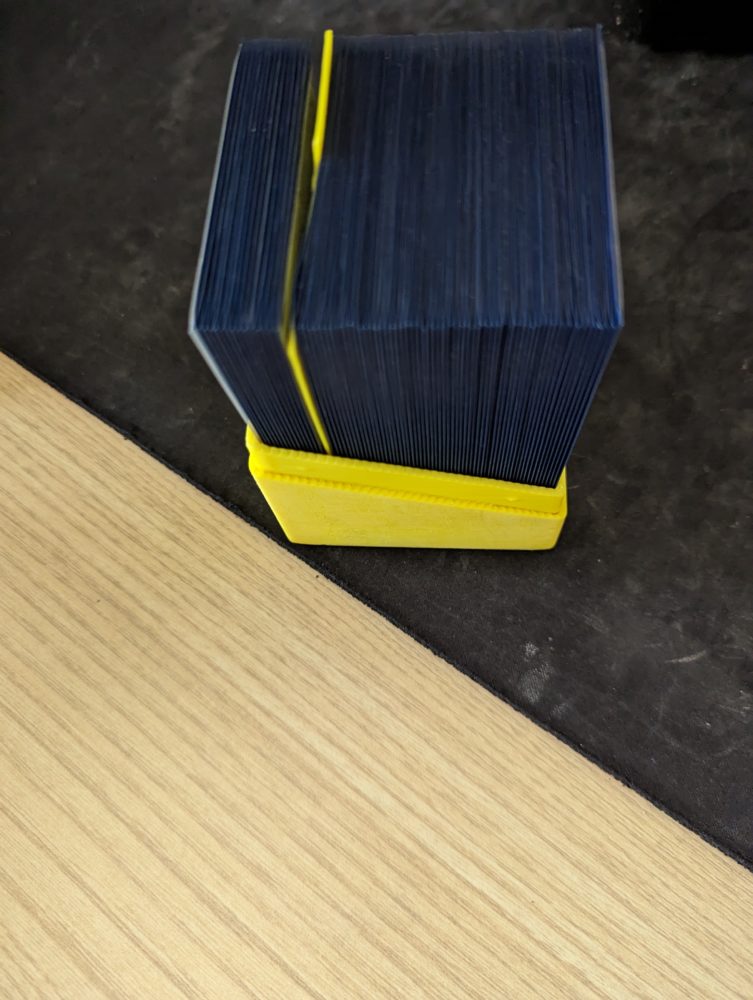
Figure 2: Size of Standard Deck Box
Design
My current design is shown below as a complete Solidworks assembly. It consists of two base disks which mate concentrically with the base of each petal and are secured in place via 5mm bolts. These two rings are then bolted together via a 5mm center hole with a small spacer in between them to prevent the inner petals from colliding with the outer petals. Finally an internal deck box is bolted on top of these two base disks to store and protect the cards. The flower remains closed by neodymium magnets on the outer pedals’ tips. To open the box one presses down on the center of the blossom to separate the pedals and then the loose fitting pivots allow gravity to do the rest of the work. Once the flower is opened the lid can be removed to access the cards contained inside.
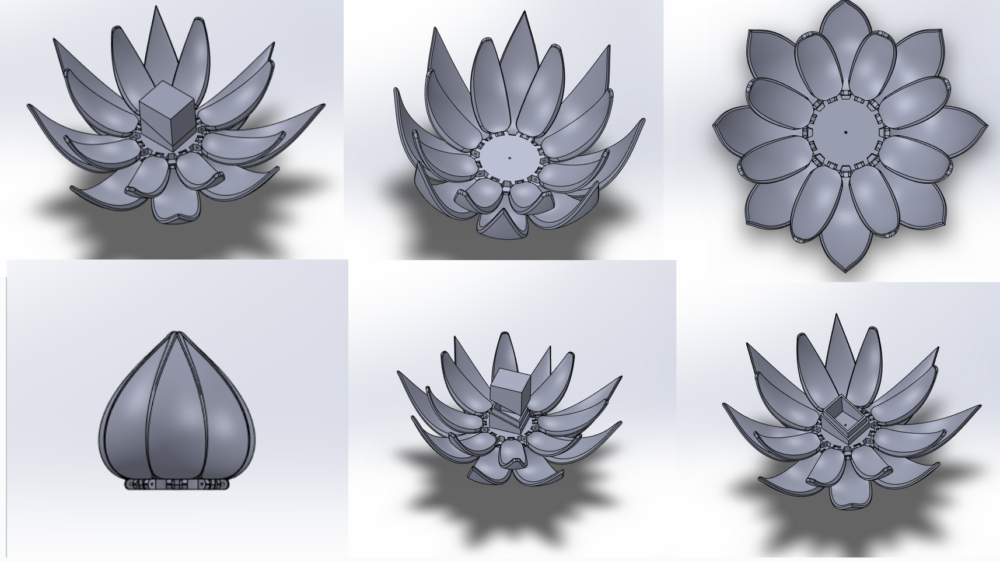
Figure 3: Current Design
Manufacturing
The manufacturing process will take place on a combination of the two machines shown below. The initial prototype will be done with a 1.2mm nozzle and PLA for speed and ease. Once the design has been printed, tested, and redesigned for any potential errors, the final design will be printed in PETG with a .4mm nozzle and sanded to a matte finish. The use of PETG is to ensure that wear over time does not occur and the use of a smaller nozzle is to ensure better detail on the final project. As of now the initial CAD has been completed and initial printing can begin. I expect this initial printing to be fully completed by April 10th and the redesign that may follow to be completed by April 20th. Further details of my manufacturing timeline can be seen in the project Timeline graphic below.
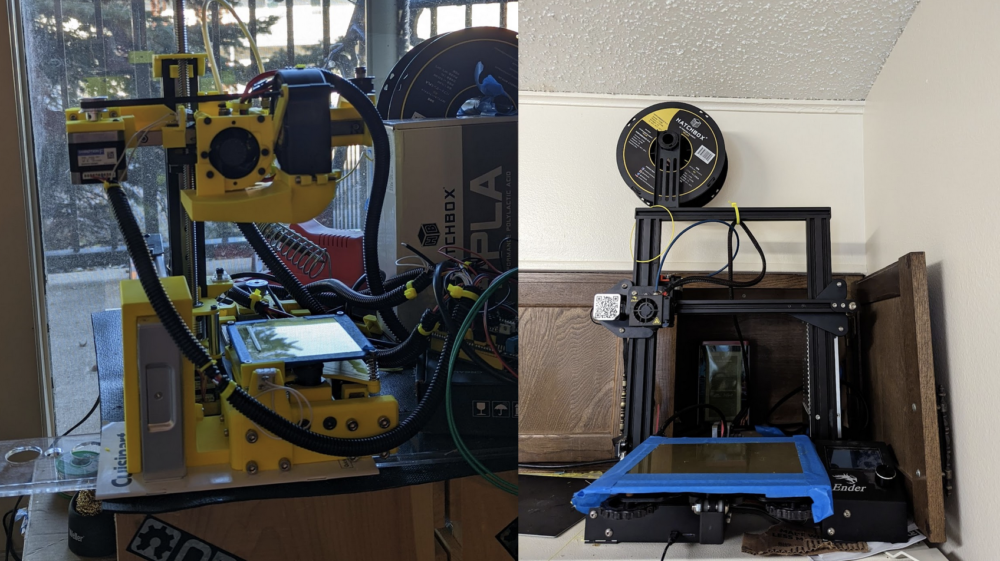
Figure 4: Available 3D Printers For Manufacturing
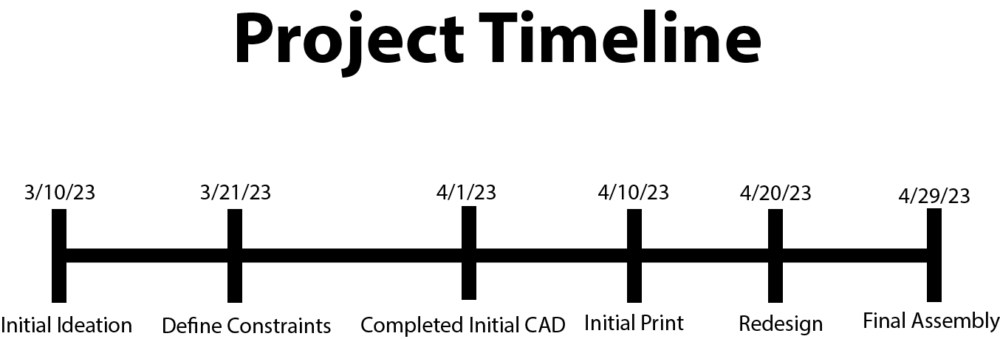
Figure 5: Design Timeline
Presentation Video found here: https://youtu.be/cs0IqQdLHro
Sources:
Suter, Jason. “3D Print This Blooming Flower Night Light.” Make: DIY Projects and Ideas for Makers, 19 Jan. 2023, makezine.com/projects/3d-print-this-blooming-flower-night-light.

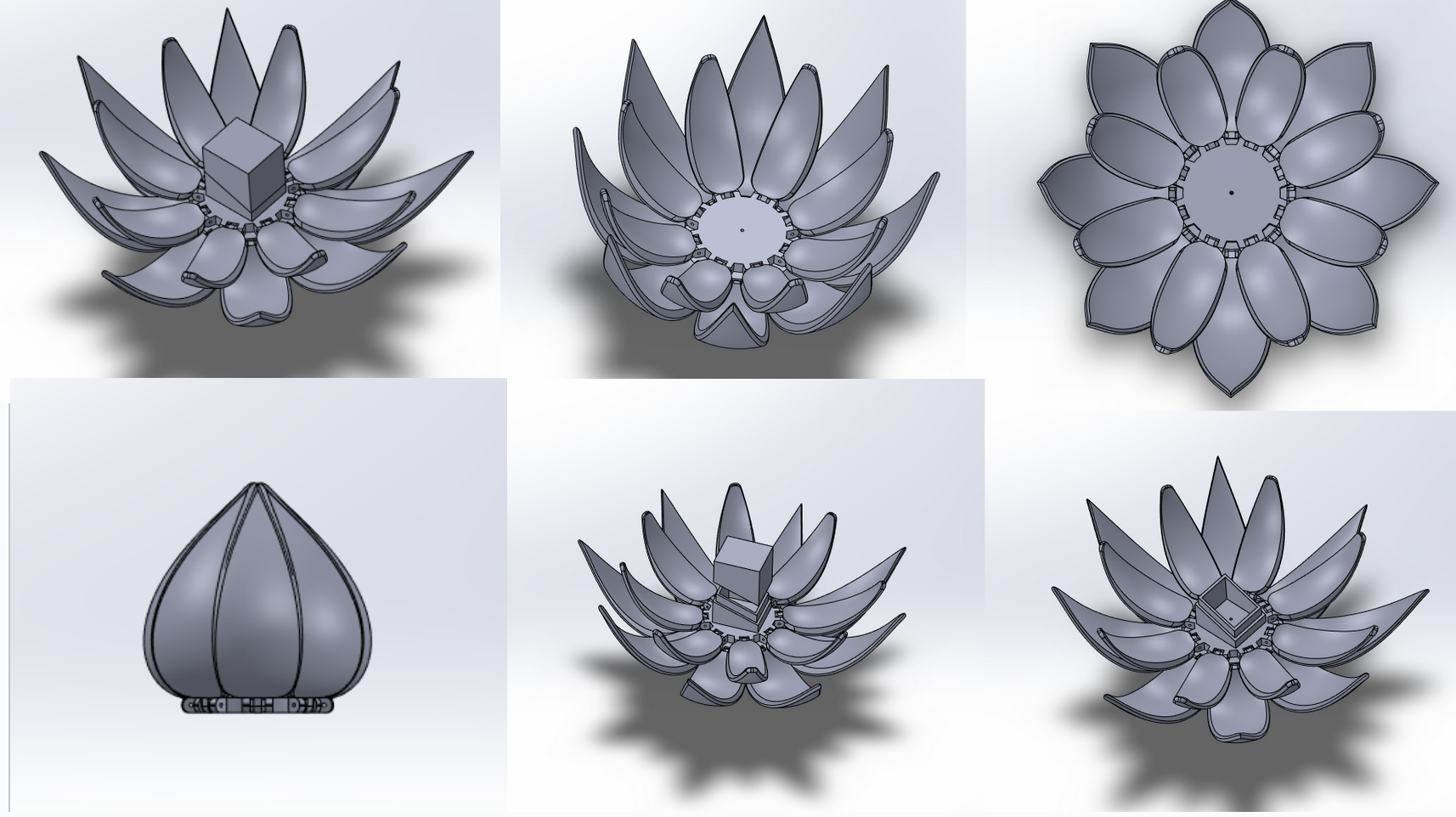
3 Comments. Leave new
Hi, this an exciting project and seems pretty technically challenging. I am curious if there will be a mechanism somewhere on the object that controls whether it is open or closed.
This looks really cool! What’s going to prevent the petals from falling down on their own?
Thanks. I considered a few methods of fixturing the pedals in the upright position, but eventually settled on small magnets inset into the tips of the petals.